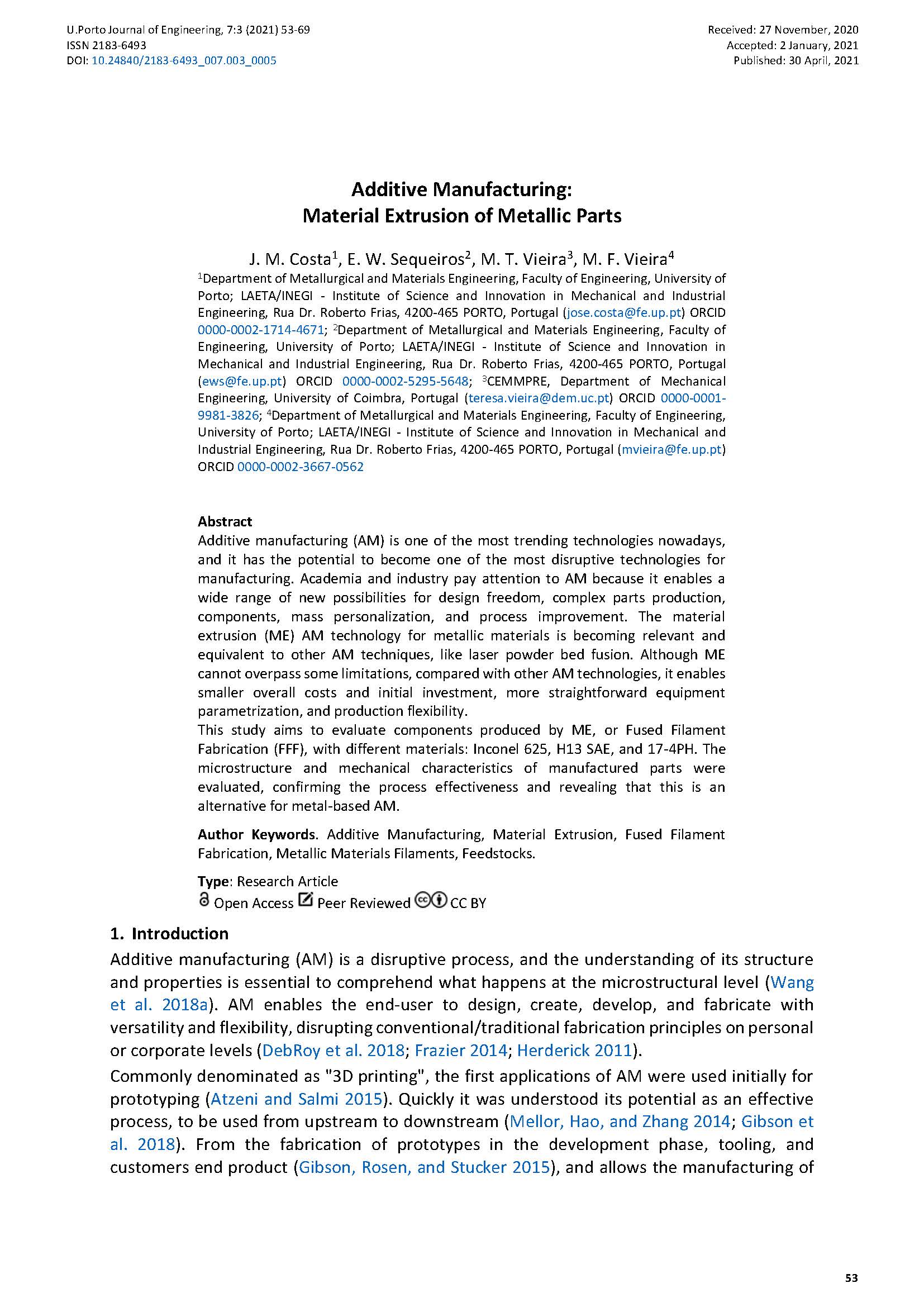Additive Manufacturing Material Extrusion of Metallic Parts
Main Article Content
Abstract
Additive manufacturing (AM) is one of the most trending technologies nowadays, and it has the potential to become one of the most disruptive technologies for manufacturing. Academia and industry pay attention to AM because it enables a wide range of new possibilities for design freedom, complex parts production, components, mass personalization, and process improvement. The material extrusion (ME) AM technology for metallic materials is becoming relevant and equivalent to other AM techniques, like laser powder bed fusion. Although ME cannot overpass some limitations, compared with other AM technologies, it enables smaller overall costs and initial investment, more straightforward equipment parametrization, and production flexibility.
This study aims to evaluate components produced by ME, or Fused Filament Fabrication (FFF), with different materials: Inconel 625, H13 SAE, and 17-4PH. The microstructure and mechanical characteristics of manufactured parts were evaluated, confirming the process effectiveness and revealing that this is an alternative for metal-based AM.
Downloads
Article Details

This work is licensed under a Creative Commons Attribution 4.0 International License.
Authors who publish with this journal agree to the following terms:
- Authors retain copyright and grant the journal right of first publication with the work simultaneously licensed under a Creative Commons Attribution License that allows others to share the work with an acknowledgement of the work's authorship and initial publication in this journal.
- Authors grant the journal the rights to provide the article in all forms and media so the article can be used on the latest technology even after publication and ensure its long-term preservation.
- Authors are able to enter into separate, additional contractual arrangements for the non-exclusive distribution of the journal's published version of the work (e.g., post it to an institutional repository or publish it in a book), with an acknowledgement of its initial publication in this journal.
- Authors are permitted and encouraged to post their work online (e.g., in institutional repositories or on their website) prior to and during the submission process, as it can lead to productive exchanges, as well as earlier and greater citation of published work (See The Effect of Open Access).

